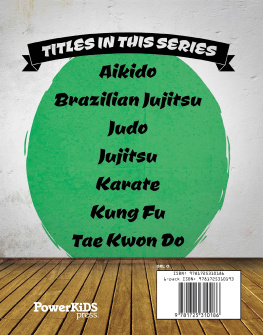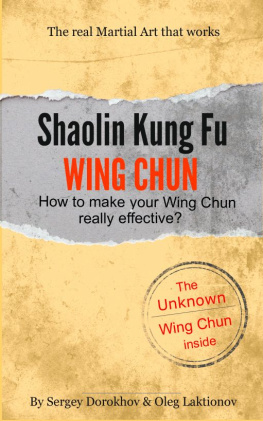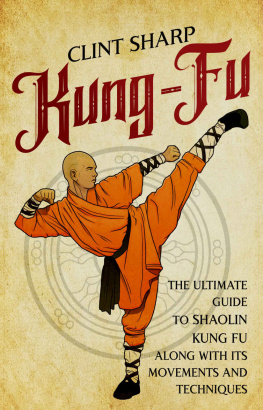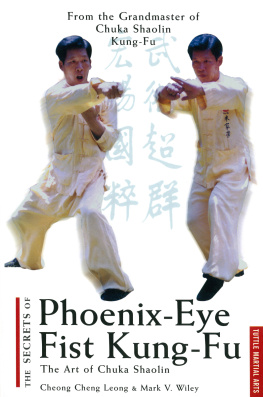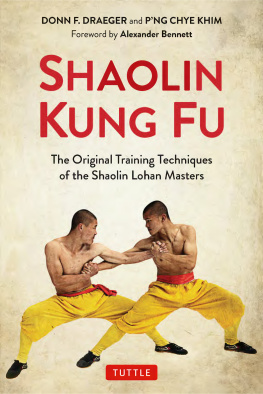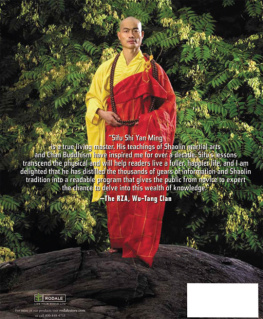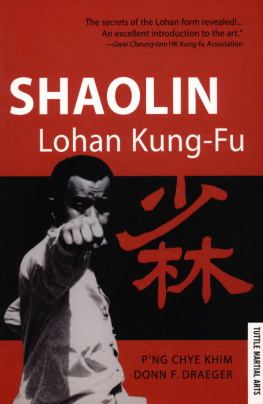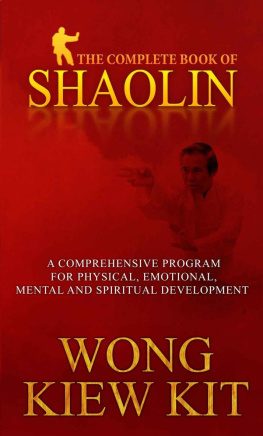ACKNOWLEDGMENTS
Special thanks to all those individuals who have inspired me
to spread the Jow Ga Legacy and contributed to the development
of this book.
Researcher & Editor: Eric Hargrove
Photographer: Moshe Zusman
Liason: Hon Lee
Advisors: Stephan Berwick
Demonstrators: Henry Hsiang


Ron Wheeler has been involved in the martial arts for over two decades. He first began training in what he called Back Alley kung fu in 1977 when he would learn techniques from his friends who studied at the various martial arts schools in the Washington, D.C. area. He then began his formal training in Jow Ga kung fu 1981 first under Sifu Randy Bennett and later continued his training in the school of Master Dean Chin.

C HAPTER

Chinese martial arts has a long, vast, and rich history with some systems dating back as far as the 10th Century, as in the case of the Chang Chuan (Long Fist) system created by Zhao Kuang Yin.
Due to its vast size and typography as a country, the martial arts of China are broken down into two main categories, which are Northern and Southern, and the most famous system of Chinese martial arts, Shaolin, is no exception,
Shaolin martial arts were founded by an Indian monk by the name of Da Mo who, while traveling through China, made his way to Shaolin temple where he taught a series of exercises known as the 18 Lohan methods to help the monks strengthen their bodies during the long hours of meditation they had to endure.
From this emerged a system of martial arts that has become famous the world over. The Jow Ga system can be referred to as a Shaolin-based system in that its roots are connected directly to both the Northern and Southern Shaolin temples but its creation did not originate within the temple.
The creation of Jow Ga kung fu can be attributed to two Southern Styles and one Northern.
One of the Southern styles is the Hung Ga system which traces its roots back to the Southern Shaolin Temple located in the Fukien province.
Hung Hei Gun who was a tea merchant in Fukien acquired his knowledge from Gee Sim who was a monk from the Southern Shaolin temple. The system is known as one of the five family systems of southern China. The other four family styles are Choy Ga, Lau Ga, Li Ga, and Mok Ga with Hung Ga becoming the most famous of the five.
Hung Ga is famous for its rock solid stances and powerful punches. The hand techniques are based on the five animal styles of Shaolin Kung fu. They are the Tiger, which promotes strength and courage; the Crane, which teaches balance and finesse; the Leopard, which teaches speed and aggression; the Snake, which trains relaxation and accuracy in striking; and the Dragon, which cultivates the spirit and teaches breath control.
Hung Ga is also known for its Sup Yee Kiu Sao (Twelve Bridge Hands) technique which is developed through a combination performing the exercise known as Da Sam Sing (Hitting Three Stars) and a form of Hay Gung (Hand Chi Gung) using a combination of breathing and isotonic movement to make the forearms seem as hard as iron.

Shaolin Temple
The other southern style found within Jow Ga is the Choy Ga system founded by Choy Gau Lee. Although the true origin of Choy Ga is unclear, it is believed to have been developed from the Rat Style of Kung fu that was being taught in Shaolin. As time went on it was developed even further by incorporating methods and techniques from the Snake style into it.
Choy Ga is famous for its quick and rapid footwork and its circular style long range punches that work in conjunction with the footwork.
Like many Shaolin systems, a strict moral code is taught hand in hand with the physical training that helps the student develop a strong character.
The Northern side of Jow Ga is represented by what we simply refer to as Bak Sil Lum (Northern Shaolin) as we are unsure of the exact name of the Northern Shaolin style Jow Lung learned from the Abbott of the Kek Lok Si Temple.
What is for certain is that Jow Ga exhibits many of the traits found within Northern Shaolin boxing such as lightness in footwork, as the footwork taught within Jow Ga is not as heavy as other traditional Southern styles.
Also, many northern styles are known for their leaps and jumping kicks. The Jow Ga system contains more aerial kicks than most other southern styles. Kicks such as the Lin Wan Toi (Double Kick), Shin Fung Toi (Tornado Kick), and the Fei Wang Yaung Toi (Flying Side Kick) are all taught within the system.
In the Jow Ga version of the Ng Ying Kuen (5 Animal Fist) there is a special type of Flying Side Kick that is commonly seen in the modern Wu Shu Nan Chuan (Southern Fist) form called Fei Fu Mei Toi (Flying Tiger Tail Kick). This kick is executed like the standard Flying Side Kick, however, instead of landing back on ones feet a practitioner lands in body drop position on the left side of the body with the kicking leg still extended.
The form Man Jeet Kuen (10,000 Shape Fist) has the leg technique know as Lin Wan Toi which translates a continued kicking method.
Within the form the practitioner will execute a right leg Side Kick followed quickly by a powerful left Heel Kick.
Shaolin martial arts are limitless as one can practice well into their old age, as mastering one system alone can take a life time.
With powerful hand techniques and strong stances of the south along with the lively footwork and versatile kicks of the north, Jow Ga has the best of both worlds when it comes to Shaolin martial arts.
The Jow Ga system is young by comparison to many other styles of kung fu. Created in 1915, this form of martial art has developed a strong reputation as one of the most effective and powerful styles of kung fu created at the end of the Ching Dynasty. Four individuals are most noted for the development and growth of the Jow Ga system from China, Hong Kong, and the U.S.
History of Jow Ga
Jow Lung (1891-1919)
The Jow Ga system, often referred to as a southern style, is a combination of both southern and northern Shaolin Kung Fu. The system begins with Jow Lung who is considered the systems main founder and his four brothers Jow Hip, Jow Bui, Jow Hoy, and Jow Tin. His brothers originally learned the art of Hung Ga kung fu from their uncle Jow Hong Hei who was a student of the famous Hung Ga master Wong Key Ying, the father of Wong Fei Hung, who is considered the father of modern day Hung Ga kung fu.

Jow Lung
While in his late teens, Jow Lung lent his assistance to an elderly gentleman by giving him shelter from a rainstorm. The old man noticed that Lung was a martial artist and asked him to demonstrate his skill. The old man commented that Jow Lungs movements were powerful but somewhat slow. The old man suggested that he combine speed with his powerful movements. The old man later introduced himself as Choy Gau Gung a practitioner of his family art of Choy Ga and a direct descendent of Choy Gau Lee, the creator of the style. Jow Lung had great respect for his new teacher and dedicated himself to leaning all that he could from him.


